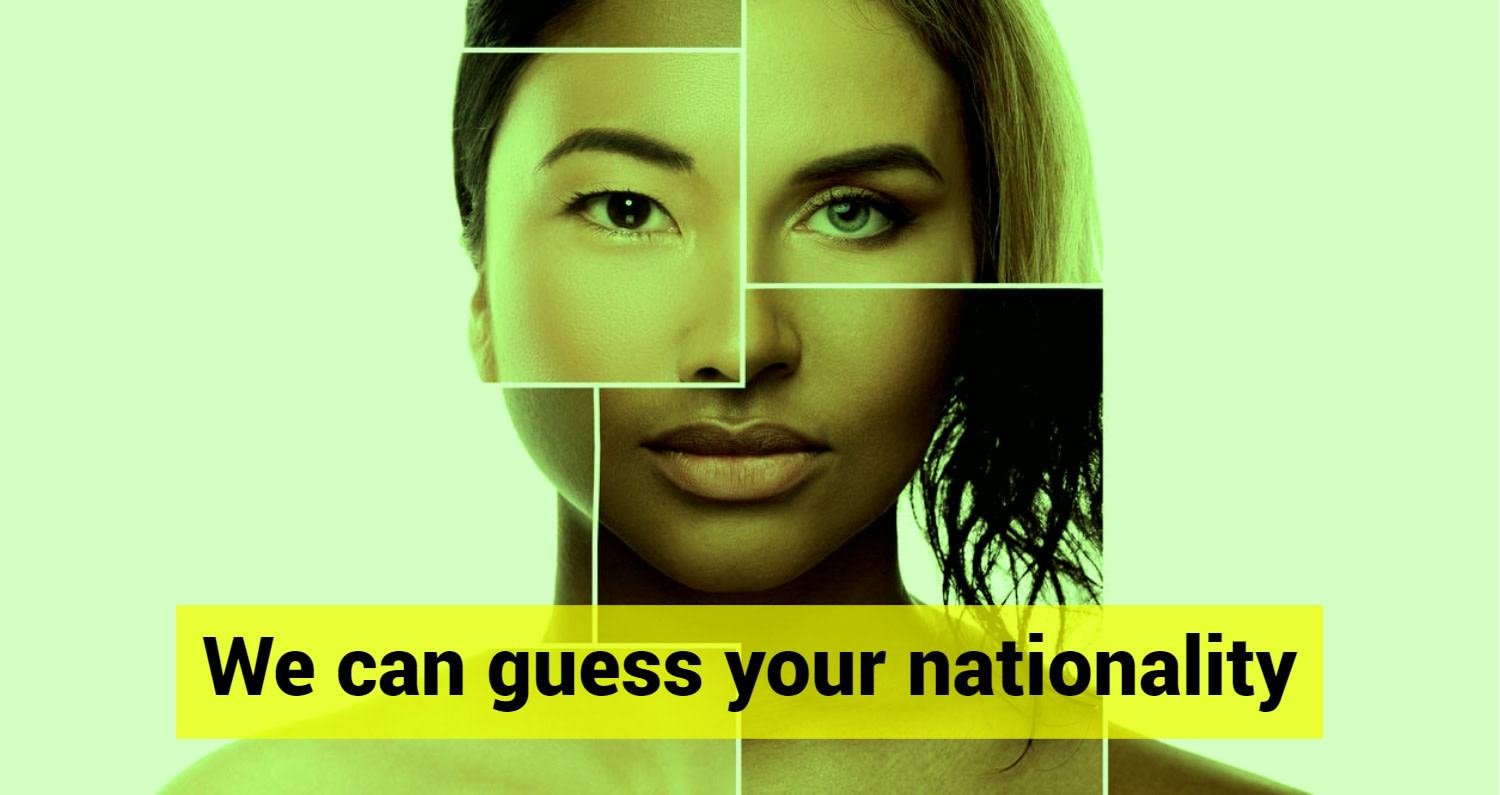Can AI Guess Your Ethnicity? Facts & Myths Explored!
Can an algorithm truly decipher the complex tapestry of human heritage from a fleeting glance? While the allure of instant answers and the promise of unlocking ancestral secrets through a simple photograph is strong, the reality is far more nuanced, and the claims often overstate the capabilities of current technology.
The pursuit of understanding our origins is a fundamental human endeavor. We are drawn to the idea of tracing our roots, of understanding the journey of our ancestors, and of connecting with the cultures that shaped us. This innate curiosity has fueled the development of various tools and techniques designed to reveal our ethnic and national identities. One such category of tools is the ethnicity guesser, a concept that uses algorithms and artificial intelligence to analyze visual dataprimarily facial featuresin an attempt to estimate a person's ethnic background or nationality.
The appeal of these tools is undeniable. Imagine, for a moment, the ease with which you could "discover" your heritage, potentially connecting with distant relatives or gaining a deeper appreciation for your cultural identity, all through a simple photo upload. Marketing strategies tailored to specific ethnic groups could be revolutionized, leading to more targeted and effective campaigns. Streaming platforms could personalize content recommendations, enhancing user engagement and satisfaction. The possibilities seem endless.
However, the reality of these applications is often more complex than the initial promise. Current technology struggles with the intricate nature of human diversity, and the idea of accurately determining ethnicity from a photograph remains a significant challenge. Several factors contribute to this difficulty, including the limitations of facial analysis algorithms, the complexity of human genetics, and the fluidity of ethnic boundaries. Many apps and websites promise to reveal your ethnicity based on a photo, but the accuracy of these tools is questionable at best.
Many systems analyze facial features, skin tone, hair color, and eye shape, but the results are often inaccurate. The data used to train these algorithms may not be representative of the full spectrum of human diversity, leading to biases and inaccuracies. Furthermore, ethnicity is not a simple, binary characteristic; it is a complex blend of ancestry, cultural experiences, and self-identification. A person may have ancestors from multiple regions, leading to a diverse ethnic makeup that is not easily summarized by a single label. Modern DNA analysis methods are the most reliable way to reveal a persons background.
Let us delve into the world of AI-powered ethnicity analysis, examining the science, the limitations, and the ethical considerations surrounding this rapidly evolving field.
Various platforms are available. Some offer free trials or basic services, while others require subscriptions or paid features. The more detailed the input provided, the more refined the results. However, it is crucial to approach these results with a critical eye, recognizing that they are, at best, educated guesses.
One tool available is Kairos, which claims to offer advanced facial analysis capabilities, while others, such as YesChat.ai, provide an opportunity to explore ethnicity guessers with a free trial.
The concept extends beyond mere novelty; it is being integrated into various applications. Streaming platforms are exploring ways to personalize content recommendations based on perceived ethnicity, potentially increasing user engagement. Marketers are utilizing these technologies to tailor strategies for specific ethnic groups, resulting in more targeted and effective campaigns. The implications span diverse areas, from entertainment to commerce.
It's interesting to note that some systems leverage interactive quizzes, exploring characteristics like skin tone, hair color, and eye shape to identify potential ancestral regions. These quizzes and tools, however, are inherently limited due to the complexity of human genetics and the evolving nature of ethnic identity.
Even as technology advances, it is essential to acknowledge the limits of what these tools can achieve. It is not possible to accurately determine where your ancestors were from based solely on a photograph. The algorithms are trained on datasets that are often limited and may not represent the full breadth of human diversity. Ethical concerns are important as well.
Imagine the possibilities if this technology were perfected. You could upload a photo and instantly receive a detailed breakdown of your ancestral origins, tracing your lineage back through centuries. You could connect with communities and cultures that share your heritage, enriching your understanding of yourself and the world. However, the reality is more complicated.
The core function of many of these tools is based on facial analysis. Algorithms analyze various facial features, such as the shape of the eyes, nose, and mouth, as well as skin tone and hair color. By comparing these features to databases of different ethnic groups, the systems attempt to provide an estimate of a person's ethnic background. The output can range from a simple percentage breakdown of ethnicities to more detailed information, such as potential regions of origin or historical background.
One of the main challenges is the complexity of human genetics. Humans are incredibly diverse, and it is often difficult to assign an individual to a single ethnic group. The algorithms may struggle with individuals of mixed heritage or those who do not fit neatly into predefined categories. The data used to train these algorithms can also be biased, reflecting existing societal stereotypes and prejudices.
Several factors affect the accuracy of these systems. The quality of the photograph is crucial; a clear, well-lit image will provide more accurate results than a blurry or poorly lit one. The input also matters; the more detail provided, the more precise the guess. However, it is crucial to note that even with the best input, the results are still estimates. DNA analysis is a more reliable method of determining ancestry.
These tools have several potential applications. They can be used for marketing purposes, enabling companies to target specific ethnic groups with tailored advertising campaigns. They can be integrated into streaming platforms to personalize content recommendations, enhancing user experience. They can be used in education to teach students about diversity and heritage. However, there are ethical considerations to take into account.
The primary ethical concern is the potential for bias and discrimination. If the algorithms are trained on biased data, they may perpetuate existing stereotypes and prejudices. Furthermore, these tools could be misused to identify or profile individuals based on their ethnicity, leading to discrimination in hiring, housing, or other areas. Data privacy is also a concern.
If you want to delve further into this technology, you can visit sites such as miniapps.ai or yeschat.ai, which offer free trials and interactive experiences. Remember, the information provided by these tools should be considered as a starting point for exploration, rather than a definitive answer to your heritage. Always approach the results with a critical eye, recognizing the limitations of the technology and the complexities of human identity. It's essential to balance curiosity with a healthy dose of skepticism.
One should always be mindful of the limitations of such technologies. While they may offer an interesting perspective, they are not capable of providing a definitive answer to a persons ethnic background. The human experience is far too complex, and the interactions of genetics, culture, and environment cannot be accurately encapsulated in a single photograph.



Detail Author:
- Name : Dorian McKenzie
- Email : qchamplin@hotmail.com
- Birthdate : 1994-07-11
- Address : 78600 Lesch Ports Apt. 116 Cullenborough, NY 15738-5714
- Phone : 1-442-202-1681
- Company : Fisher-Gutmann
- Job : Fitness Trainer
- Bio : Mollitia quisquam minus placeat harum omnis excepturi quia est. Sit cumque perferendis voluptatem commodi vero dolores.